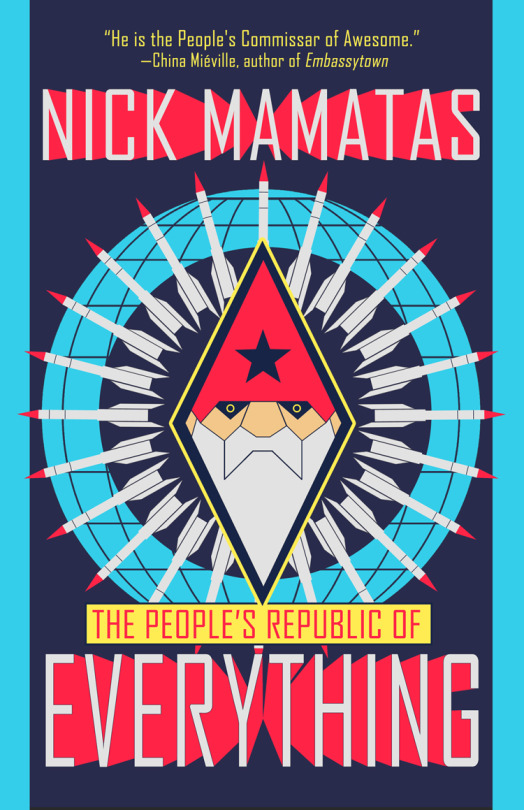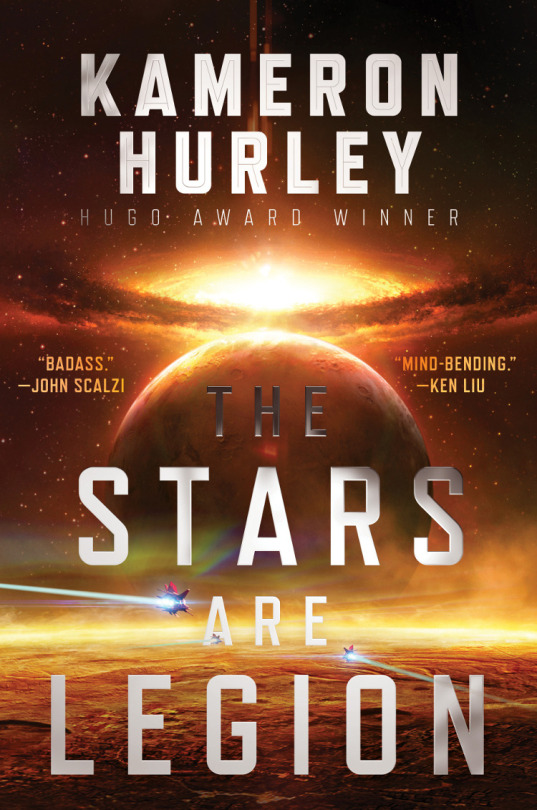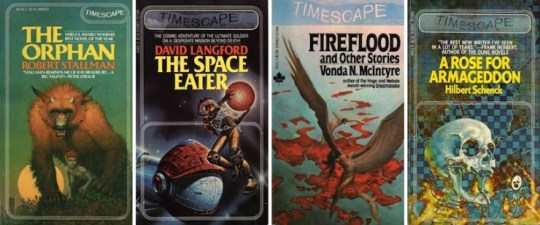Tachyon tidbits featuring Nick Mamatas, Kameron Hurley, Nalo Hopkinson, Brandon Sanderson, and David Hartwell
The latest reviews and mentions of Tachyon titles and authors from around the web.

Nick Mamatas, Kameron Hurley, Nalo Hopkinson (photo: David Findlay), Brandon Sanderson (Ceridwen via Wikimedia Commons), and David Hartwell ( Houari Boumedienne [CC BY-SA 2.0 ], via Wikimedia Commons)
INFINITE TEXT praises Nick Mamatas’ forthcoming collection THE PEOPLES REPUBLIC OF EVERYTHING.
This collection incorporates a range of stories written over the last ten years. I enjoyed that each story is followed up by Mamatas elaborating on how the story was written, but most importantly, the ever-frequently-asked question: where do your ideas come from? I really enjoyed this aspect because at times short stories in the speculative genre that cross over can be so odd I’m not sure I know what to think of them. Mamatas explains how he came up with the idea and what he was trying to achieve for each one of these short stories. Two stories in this volume are about collecting correspondence to create a personality-emulator. Mamatas writes after “Walking with a Ghost” that he was fascinated by the friendship and correspondence between Jack Kerouac and H.P. Lovecraft and their cult following, and the idea that one can gather enough data on a person’s way of addressing to be able to emulate ‘personhood.’ Yes, there is an AI Lovecraft in this collection. The second story follows a Marx and Engels partnership in the style of Sherlock Holmes and John Watson—told in a steampunk style. These are just two examples of the variety that can be found in this collection. In the middle there are some that struck a chord with me, particularly “Tom Silex, Spirit-Smasher” and “The Phylactery”–mainly because there was something very personal to them with a touch of humanity and interesting characters. There are a few stories published here for the first time for which even Mamatas has no further comments. Several of his stories focus on Communism and politics, and concludes with a novella (what used to be a screenplay) about the George W.H. Bush era and the invasion of Iraq which was picked up for a film and then dropped (but we get to enjoy it in novella format).

I liked his writing style. On a sentence-level Mamatas in not pretentious nor exclusionary. His fiction is accessible if you want to be taken into the dark corners of niche-speculative fiction. I enjoyed them very much, and like every short story collection there will be a mixture of what works and what doesn’t on an individual level.
Charlotte Ahlin for BUSTLE includes Kameron Hurley and Nalo Hopkinson titles among 15 Sci-Fi Books To Read If You Need A Break From Dystopian Novels.
I mean, look, if you want to read devastating literature about fascist futures 24/7, I’m not going to stop you. But sometimes, it’s OK to read just for fun. It’s OK to read science fiction that doesn’t depict the future as a horrific wasteland full of human rights violations. You might even find that quite a lot of non-dystopian sci-fi can still be politically relevant. Sci-fi can run the gamut from dark and brooding to actually positive and funny. So if you’re looking for aliens and space adventures and science fictional worlds that are not set on Earth in the dismal future, here are a few books to get you started:

‘The Stars Are Legion’ by Kameron Hurley
Far out, on the rim of the universe itself, lies a fleet of decaying world-ships called the Legion. And the Legion is on the move. Enter Zan, the would-be savior of the stars. She just might have the ability to enter one of the Legion’s dangerous world-ships and save whole galaxies from genocide—the only trouble is that Zan can’t recall who is exactly she is, or which side of this war she’s supposed to be on.

‘Midnight Robber’ by Nalo Hopkinson
It’s Carnival season on the planet of Toussaint, and young Tan-Tan is excited to join the festivities in her Robber Queen costume. But when she and her father are suddenly exiled to the cruel new world of New Half-Way Tree, she’s going to need more than a silly costume in order to survive. Tan-Tan is going to need to become the real Robber Queen, here in this world where all the monsters of folklore have come to life.
At DEADLINE, Nellie Andreeva and Denise Petski reports that Brandon Sanderson Teams With FremantleMedia North America For Drama Series, Part Of Multi-Media Project.
FremantleMedia North America, along with Random House Studio, have partnered with best-selling fantasy novelist Brandon Sanderson for an ambitious, multi-media collaboration. It includes the development of drama Dark One for television. Additionally, Sanderson is concurrently creating a graphic novel that will be published by Vault Comics. He is also penning a supplementary, multi-volume book series that will expand on the storyline from the show and further explore subsidiary characters. The multi-media project also includes a Dark One podcast, which will shed further light on the incidents leading up to where the TV series will begin.
Dark One will be a dramatic fantasy adventure spotlighting a young man who sees visions of strange and fantastical worlds, which he is told are just hallucinations. But this dark and deadly fantasy world that keeps coming to him is actually a real vision of another world – one where he has been prophesied to become a tyrant and destroy this land of interesting creatures, sporadic electrical currents and a darkening landscape.
“I’m used to painting a picture in words. Dark One came to life when I freed myself to think of it as a project for actual visual media, with the setting, characters and outline all coming together,” said author Sanderson. “I’m excited to be able to partner with FremantleMedia North America and Random House Studio on this for television.”

James Davis Nicoll on TOR.COM argues (rightfully so) Why Editors Matter: David Hartwell’s Extraordinary Timescape Books.
Avid SF readers may know the late David G. Hartwell (10 July 1941–20 January 2016) as one of Tor Books’ senior editors. Or perhaps he may be familiar as the editor and co-editor (with Kathryn Cramer) of Year’s Best SF and Years Best Fantasy, not to mention many other themed anthologies. They might be aware of his role with the New York Review of Science Fiction. Con-goers might well remember his striking fashion sense. His technicolor shirts, waistcoats, and jackets were of eye-searing brilliance and contrast.
Thanks to Asimov’s repeated admonitions that editors matter, I began at an early age to pay attention to the humans responsible for the books I consumed en masse. When I knew which editors were behind the works I liked, I would follow them from company to company. Thus I first became aware of Hartwell as the person behind Pocket Books’ remarkable Timescape imprint.
Timescape licensed its name from Gregory Benford’s novel of the same name. Ironically, Timescape the novel was never reprinted to my knowledge by Timescape the imprint, although two other Benford novels (Against Infinity and Across the Sea of Suns) would be published by the imprint. Between 1981 and 1984, Hartwell published at least 171 titles (perhaps there were more; this is my best count). Some were original to the line, others were reprints. Many, like Gene Wolfe’s Shadow of the Torturer, are still well known, and aside from the checklist at the end of this article—note to self: include checklist—I will not dwell on them.
For more info on THE PEOPLES REPUBLIC OF EVERYTHING, visit the Tachyon page.
Cover by Elizabeth Story
